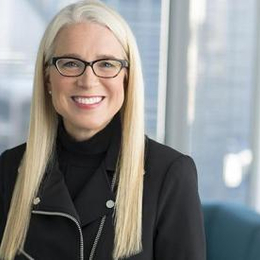Pay Parity Is Possible
When the Equal Pay Act was signed into law by President Kennedy, women earned 60 cents for every dollar men earned. Fifty-five years later, women still make only 80 cents on the dollar. For women working full time in retail, that number is just 70 cents.
Progress has been glacial, with the gap closing by just 3 cents in the last decade. At the current rate, it will take 100 years to close the pay gap, according to The American Association of University Women.
Meanwhile, the debate over the cause of the pay disparity rages on. Some point to motherhood or personal career choices. But there is no denying that systemic gender bias is at the root of pay inequality.
"Economists try to analyze all the factors that we know: industry, education, how long you've been at work, hours," Ariane Hegewisch of the Institute for Women's Policy Research recently told CNBC. "What is leftover is what we can't explain with anything that can be easily measured, and that's basically the proxy for discrimination."
The Solution Is Simple
The solution to pay inequality is simple: Pay everyone doing the same work the same amount.
Simple, but not easy to accomplish.
Even so, a growing number of companies are tackling the problem head-on, and some, including NEW partners Intel, Microsoft and Starbucks, have succeeded.
Intel reached gender pay parity for women in the United States in 2015. Early last year, the company accomplished pay and promotion parity for U.S. women, African-Americans, Hispanics and Native Americans, calling both "signals of the overall health of our company."
Another tech company — our newest partner Microsoft — now pays 99.99 cents on the dollar to women at the same job title and level. Racial and ethnic minorities earn $1.005 for every $1 earned by their Caucasian counterparts.
This spring, after 10 years of single-minded focus, analysis and new thinking, Starbucks reached its goal to end pay differences between women, men and underrepresented minorities in its U.S. operations. To help others achieve the same, the company is sharing its winning strategy, which it is now applying globally.
Adhering to Starbucks’ three principles — equal footing, transparency and accountability — will allow employers of all kinds to address the systemic barriers to pay equality.
Equal Footing
Starbucks doesn’t ask candidates about their salary history. Starting pay is based on the candidate’s skills, abilities and experience. Period. Plus, a position’s pay range is provided upon a candidate’s request.
"One of the most important things to get right is starting pay," according to Sara Bowen, an attorney who leads Starbucks’ Inclusion, Diversity, Equity and Accessibility Team. "If a woman comes into a company low, she tends to stay low. If a job candidate comes to Starbucks making 70 or 80 cents on the dollar, and we use that as the basis for her pay at Starbucks, we simply import gender inequality into our own system. Prior salary can be tainted and should not dictate how we pay our partners."
The company also removes caps on promotional increases. Its pledge: If you are promoted at Starbucks, your salary will not depend on what you made before.
Transparency
Each year, Starbucks publishes its pay equity performance and provides updates on its efforts to achieve and maintain pay parity globally.
A pay offer calculator is used to calculate the starting pay range for all store managers and district managers — and Starbucks will not retaliate or discriminate against employees for asking about or discussing wages.
Accountability
The coffee retailer is conducting comprehensive compensation analyses — including base pay, bonuses, stocks and other rewards — to further its goal of pay equality for all partners.
Raises and bonuses are statistically analyzed before they are finalized to ensure systemic bias doesn’t creep into the process.
"We tried to create tools to help us approach pay in a consistent and objective way, and remove the kind of subjectivity that can lead to pay bias," Bowen said. "These tools affect hundreds, if not thousands, of pay decisions every year. This is a complicated issue and it is not about one single moment, but about the ongoing work to make equity a reality."
It took a decade of determined effort for Starbucks to reach gender pay parity. But don’t let the magnitude of the challenge keep you from taking action or reaching out to others for help.
At NEW, we encourage our partner companies to:
- Conduct (and regularly repeat) an equal-pay analysis by job title, based on required knowledge, skill and experience.
- Include pay adjustments in the budget.
- Ensure all merit pay supports equal pay.
- Never set salaries based on pay history.
- Evaluate how maternity or disability leaves effect employees’ career paths and wage increases.
Bowen compares achieving pay equity to making exercise a habit. "It’s a huge muscle to build," she said recently. "And even when you reach a pay equity milestone, you have to keep working at it."
It’s that continuous work — changing behaviors, overhauling compensation policies, creating equal career opportunities, constant monitoring — that will ensure women and men are paid the same amount for the same work.
Editor's note: The opinions expressed in this column are the author’s and do not necessarily reflect the views of Convenience Store News.



